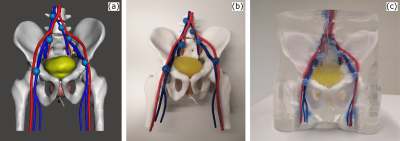Dominik F. Bauer1,2, Eva Oelschlegel1,2, Alena-Kathrin Golla1,2, Anne Adlung1,2, Tom Russ1,2, Ingo Hermann1,2, Irène Brumer1,2, Julian Rosenkranz3, Fabian Tollens4, Sven Clausen5, Philipp Aumüller5, Lothar R. Schad1,2, Dominik Nörenberg4, and Frank G. Zöllner1,2
1Computer Assisted Clinical Medicine, Medical Faculty Mannheim, Heidelberg University, Mannheim, Germany, 2Mannheim Institute for Intelligent Systems in Medicine, Medical Faculty Mannheim, Heidelberg University, Mannheim, Germany, 3Fraunhofer Institute for Manufacturing Engineering and Automation, Project Group for Automation in Medicine and Biotechnology, Mannheim, Germany, 4Department of Radiology and Nuclear Medicine, University Medical Center Mannheim, Mannheim, Germany, 5Department of Radiation Oncology, University Medical Center Mannheim, Heidelberg University, Mannheim, Germany
1Computer Assisted Clinical Medicine, Medical Faculty Mannheim, Heidelberg University, Mannheim, Germany, 2Mannheim Institute for Intelligent Systems in Medicine, Medical Faculty Mannheim, Heidelberg University, Mannheim, Germany, 3Fraunhofer Institute for Manufacturing Engineering and Automation, Project Group for Automation in Medicine and Biotechnology, Mannheim, Germany, 4Department of Radiology and Nuclear Medicine, University Medical Center Mannheim, Mannheim, Germany, 5Department of Radiation Oncology, University Medical Center Mannheim, Heidelberg University, Mannheim, Germany
We present an anthropomorphic pelvis phantom with lesions for transperineal and transrectal prostate needle interventions. The phantom is puncturable and suitable for multiparametric MRI (mpMRI) and CT imaging.

